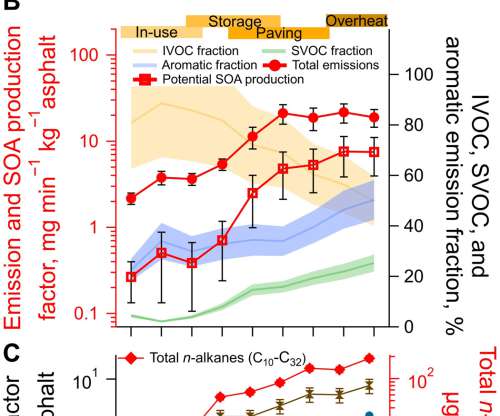Yale study finds asphalt a significant source of air pollution, especially on hot, sunny days
Green Car Congress
SEPTEMBER 6, 2020
B) Temperature dependence of total gas-phase emissions from asphalt, ranging from in-use (40 °C to 60 °C) and storage (80 °C to 140 °C) to paving and overheating (120 °C to 200c°C) temperature conditions (filled circles). 300% for road asphalt) with greater SOA yields and sustained SOA production. —Khare et al.
















Let's personalize your content